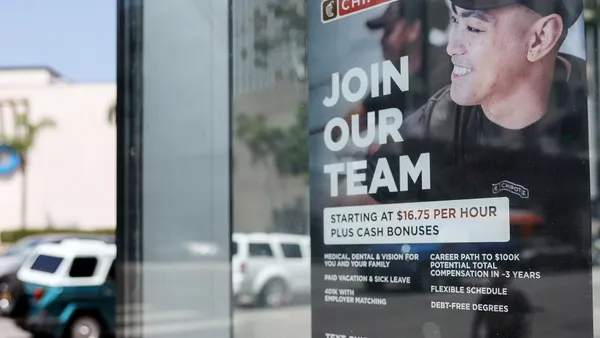As organizations navigate the impact of new work-location-related strategies on compensation and benefits programs, incorporating people-centric data while providing context and transparency can help ensure their post-pandemic strategy aligns with optional work-location decisions and organizational culture.
Many organizations have taken initial steps to support new in-office, work-from-home and hybrid models by pulling various rewards levers, such as donating to individual employees’ preferred charities as an enticement to working in-office. Some HR groups have offered additional PTO or reimbursement for commuting costs to soften the blow of return-to-office requirements. Still other HR teams have instituted new compensation strategies to support hybrid working models (e.g., in support of a more distributed workforce where remote work is normalized or to incentivize recruiting local talent expected to make appearances at a nearby office), including adopting a single-pay structure regardless of location.
While individual steps can yield positive results and valuable insights, an optimal solution requires a more comprehensive and cohesive response. Post-pandemic rewards strategies dovetail with broader HR focal points, including cultivating deeper understandings of employee needs, informing with people-centric data, developing more varied (even customized) compensation and benefits packages, and leveraging the rewards strategy to support cultural objectives and attract talent.
Philosophical debates about the nature of an organization’s unique culture often arise as executive leadership teams figure out optimal work-location game plans. Taking the following steps – most of which relate to data, context and candor – can help HR leaders ensure that the post-pandemic rewards strategy aligns with work-location decisions and organizational culture:
- Be fair: Fairness and consistency are crucial pillars of an effective compensation and benefits program. While the vast majority of HR groups responded to COVID disruptions in heroic fashion, some employee segments have been more adversely affected by post-pandemic location and rewards decisions than other segments. For example, return-to-work mandates may pose a steeper challenge to single parents balancing longer commutes with child-care responsibilities. From an inclusion perspective, it is vital to evaluate the fairness of location-related rewards decisions across all employee segments.
- Base decisions on data: While compensation data is readily available via internet searches, optimal compensation benchmarking requires access to trusted data, powerful analyses and advanced tools to slice and dice the data in conjunction with industry trends, company performance and related data. Some compensation data providers also provide tooling that helps HR teams create company-specific narratives based on relevant compensation data and industry trends.
- Lean into transparency: Compelling, data-driven narratives help the workforce respond positively to compensation and benefits changes. Misperceptions commonly arise after a significant change to a rewards program. Clear, candid and complete explanations of the rationale behind the decision, the impact on the organization and (perhaps most important) what it means to individual employees help dispel myths and misinformation while cultivating understanding and acceptance. If you do not connect the dots for employees, employees will connect the dots for themselves.
- Show your work: In a similar vein, HR groups should share their research and analyses with the workforce in a clear and succinct manner. Few high school algebra teachers give full credit to correct answers when students fail to show their work, and a similar dynamic applies to the way employees respond to compensation benchmarks. With salary data so readily available online, employees will create their own stories when HR groups do not provide sufficient explanations for how decisions are reached. Context cultivates trust.
- Engage the executive team upfront: Long gone are the days when the C-suite could blame HR for unpopular compensation and benefits policies. HR groups should proactively engage the executive team on compensation and benefits changes related to new working models. By vetting new approaches with organizational leaders, HR groups can glean valuable feedback concerning what executive leaders think of the changes on a personal level and how their teams will respond. Even the most sophisticated compensation benchmark analysis can land poorly without the leadership team’s advocacy and a thoughtful communications plan.
- Monitor responses: For most employees, benefits and pay are deeply personal matters. Employees who do not understand the logic (e.g., the why and the how) behind compensation decisions or are dissatisfied with the changes can express their displeasure on social media and in ways that may hinder engagement and productivity. HR groups should convey their decisions as transparently and rationally as possible and then monitor employee responses via ongoing touchpoints, including town halls, pulse surveys, sentiment analyses and other listening mechanisms.
- Don’t stop: In the past, organizations typically left their compensation strategies unchanged for years. That luxury no longer exists in most organizations due to the rapid pace of changes related to labor costs and employee expectations – along with challenges stemming from a long-term talent crunch. Today, HR groups should reevaluate their compensation and benefits strategies annually, if not more frequently.
The need to realign rewards packages with new working models is part of a longer-term push by HR leaders to develop more detailed and nuanced understandings of their employee populations. Where are they located? What do their race, ethnicity, gender and age demographics look like? Are they caring for young children or aging parents? How is their financial stability? What are their needs vs. their wants?
Data and analytics play a pivotal role in cultivating this understanding and in driving optimal rewards decisions. So, too, does listening: HR groups should closely monitor how employees respond to rewards adjustments and use those insights to improve subsequent adjustments. Rewards strategy is forever a balance of science and art.
About the Authors
 |
Lexi Clarke
Chief People Officer Payscale, Inc. Lexi Clarke is the Chief People Officer at Payscale, where she leads the company’s internal human resources strategies for its 600+ employees across several states and countries. With more than 14 years of experience at companies like Convoy, Redfin, Boeing and One Kings Lane, Lexi has an extensive background in people-first HR leadership, workforce growth strategy, and compensation best practices. Her expert insights have appeared in Business Insider, Vox, Fortune, HR Brew, Geekwire, SHRM and more. |
| Johnny Martinez
Director, People Advisory & Organizational Change Protiviti Johnny Martinez has over 25 years of experience in both consulting and industry with a focus on scaling global people teams and improving business performance across various industries and at organizations at different life cycle stages. Prior to joining Protiviti, Johnny led the HR organizations at several start ups, as well as global Total Rewards and People Operations teams at Netflix, Indeed and Restoration Hardware. |
 |










